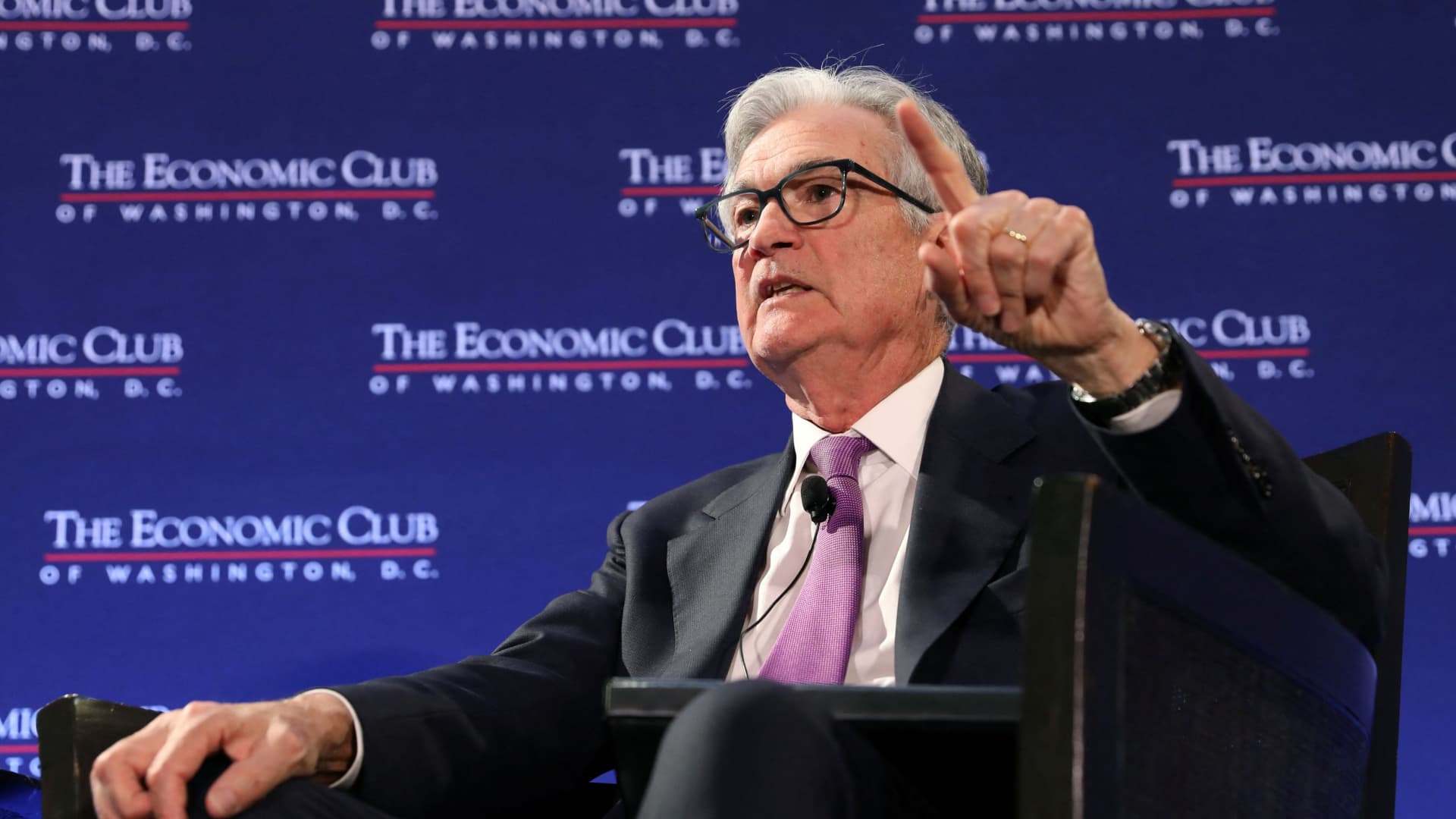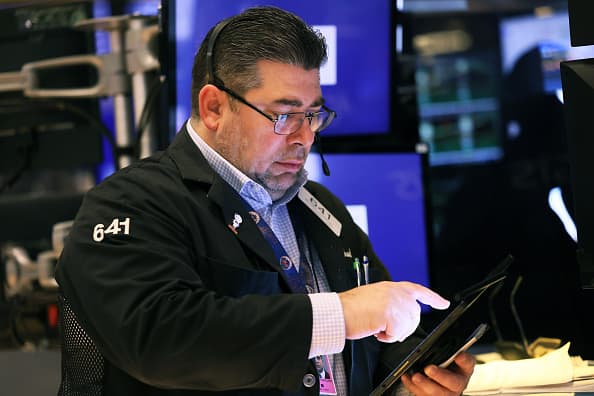Federal Reserve Chairman Jerome Powell said Tuesday that inflation is beginning to ease, though he expects it to be a long process and cautioned that interest rates could rise more than markets anticipate if the economic data doesn’t cooperate.
“The disinflationary process, the process of getting inflation down, has begun and it’s begun in the goods sector, which is about a quarter of our economy,” the central bank chief said during an event in Washington, D.C. “But it has a long way to go. These are the very early stages.”
related investing news
Powell spoke in a question-and-answer session at the Economic Club of Washington, D.C., with Carlyle Group co-founder David Rubenstein. Powell is a former partner at the firm.
Markets briefly turned positive as Powell spoke as investors are hoping the Fed soon will halt the aggressive interest rate hikes it began last year. However, the major averages later flipped back negative after Powell cautioned about strong economic data like last week’s jobs report for January, before turning positive again.
Asked whether it would have influenced the Fed’s rate call if it had the jobs report before the policy meeting, Powell said, “We don’t get to play it that way unfortunately.” The report showed that nonfarm payrolls rose by 517,000 in January, nearly triple the Wall Street estimate.
He said if the data shows that inflation is running hotter than the Fed expects, that will mean higher rates.
“The reality is we’re going to react to the data,” Powell said. “So if we continue to get, for example, strong labor market reports or higher inflation reports, it may well be the case that we have do more and raise rates more than is priced in.”
At its most recent meeting, which concluded six days ago, the Fed raised its benchmark interest rate a quarter percentage point, the eighth increase since March 2022, to a target range of 4.5%-4.75%.
In his remarks Tuesday, he gave no indication of when the hikes will stop, and said it probably will take into 2024 before inflation gets to a point where the Fed feels comfortable. The central bank targets 2% inflation, and it’s currently running well in excess of that by multiple measures.
“We expect 2023 to be a year of significant declines in inflation. It’s actually our job to make sure that that’s the case,” he said. “My guess is it will take certainly into not just this year, but next year to get down close to 2%.”
The Fed looks at a series of data points when examining inflation.
One particular point of interest is the personal consumption expenditures price index that the Commerce Department produces. The headline reading showed inflation rose 5% over the past year in December, and 4.4% when discounting food and energy — “core” inflation that is thought to be a better gauge of long-run trends.
But the Fed has gotten even more granular than that, lately focusing on core services inflation minus housing, which Powell said remains elevated.
“We need to be patient,” he said. “We think we’re going to need to keep rates at a restrictive level for a period of time before that comes down.”
Powell’s first mention of “disinflationary” trends was in his post-meeting news conference last Wednesday. Markets latched onto the term and briefly rallied before turning volatile over the last several sessions.
Powell said he expects inflation will cool but at a gradual pace.
“Our message [at the last meeting] was this process is likely to take quite a bit of time. It’s not going to be smooth,” he said. “It’s probably going to be bumpy, and we think that we’re going to need to do further rate increases, as we said, and we think that we will need to hold policy at a restrictive level for a period of time.”


